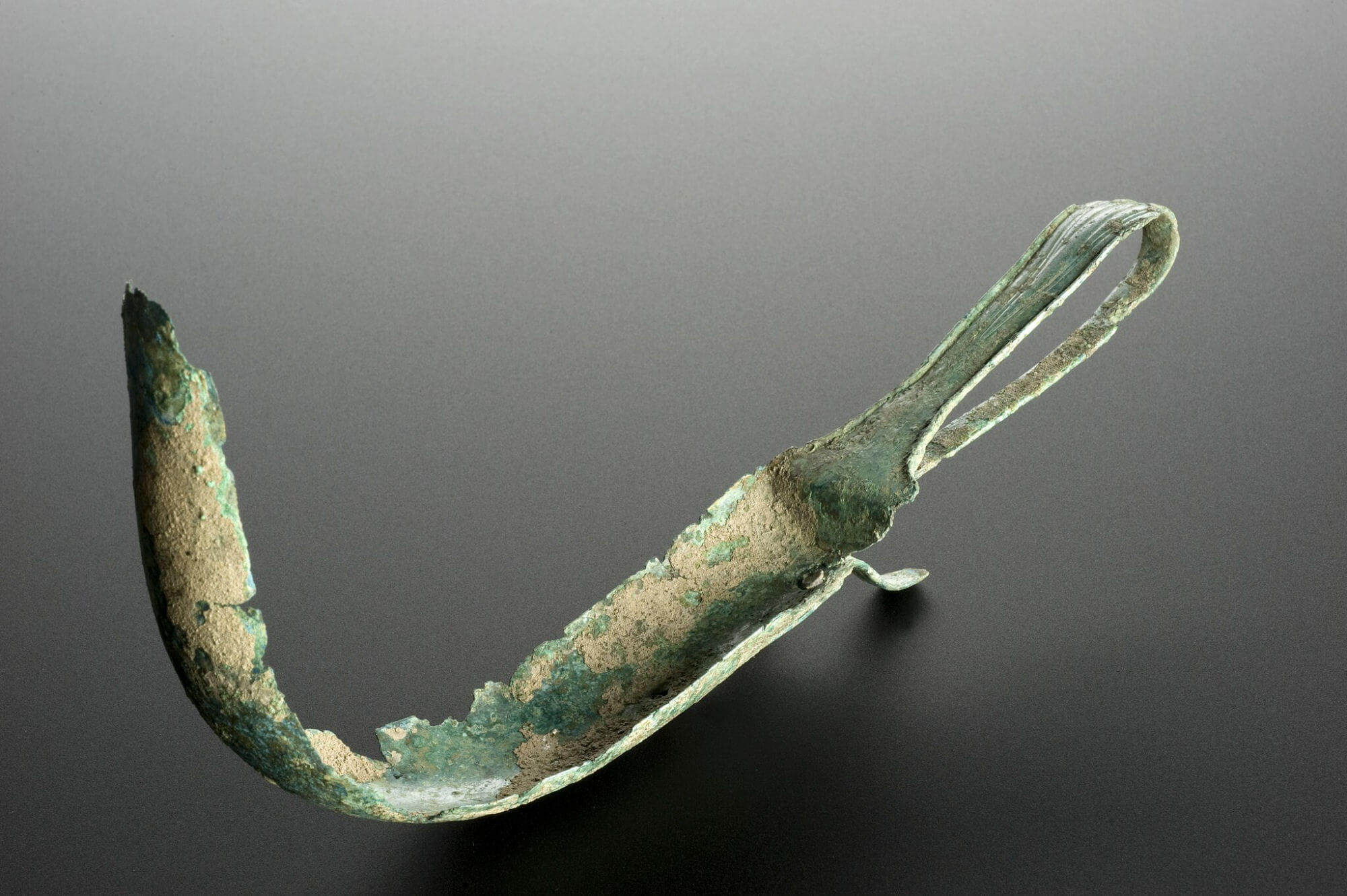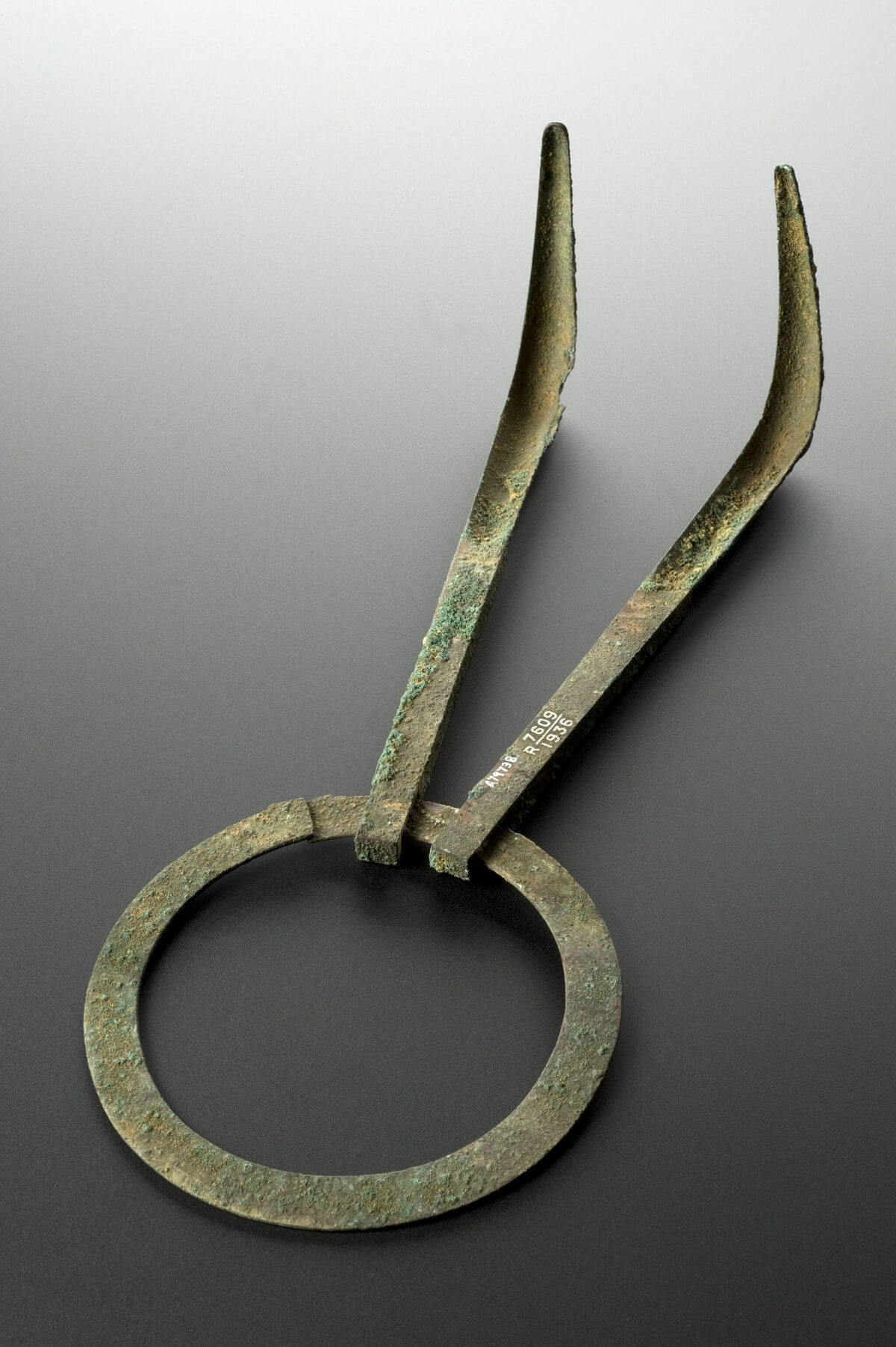The Strigil in Ancient Rome
The grooming habits of the ancient Romans were a strange mix of activities; some that we might recognize from our modern lives, and routines that are completely foreign to us.
The ancient Romans, for example, engaged in bathing and socializing at the equivalent of health clubs, just as we do today, but they groomed themselves with tools that looked more like torture devices than useful grooming objects!
The strigil - which resembles more a horse's hoof pick than a human grooming tool - was one such odd-looking item, and was used by the Romans and Greeks of the ancient world to scrape sweat and dirt from the body.

See page for author, CC BY 4.0, via Wikimedia Commons
An ancient Roman strigil
The instrument has a curved, dull blade and was primarily used by men and male athletes, though there is some evidence that it was also used by women at some point in history.
People who engaged in strenuous physical activity and were prone to accumulating large amounts of sweat and dirt were most likely to have this item in their possession, and it was most likely to be used to clean the skin before bathing.
Because the grooming tools were so effective, they have been discovered in many cultures throughout the Mediterranean region, although their popularity waned with the fall of the Roman Empire and the decline of the baths.
History
It is uncertain when the strigil first appeared in Roman culture. There are some mentions of it in earlier Greek culture, but not until later in Greek history.
It is thought to have originated in Greece and spread to the Roman Empire. They were heavily used in conjunction with olive oil rubbed into the skin as a form of cleansing agent, as olive oil was abundant during this time period and in the Mediterranean region.
It became common practice to include strigils in burial and tombs as offerings to the dead, or as necessary tools for use in the afterlife. In the late Roman era, strigils were included in most grooming sets for the middle class and wealthy, and it was not uncommon for strigils to be given as gifts, often with the owner's name or initials engraved on the handle.
Throughout ancient Rome, as the practice of using strigils developed, the application of oil to the body became an optional practice in later times. Some individuals used the tools to scrape away any dead skin and dirt or dust from the body without the application of oil or a cleansing agent.
Soap made by combining fats or oils with an alkali such as lye was originally used for laundry, but it later gained popularity as a bathing product around the same time that oils and stigils began to disappear.
Construction
Early strigils could be made of wood or reeds, but bronze was the most commonly used material for this purpose. Despite the discovery of a silver strigil in a Roman tomb, the owner of the object appears to have been an exceptionally wealthy individual, and the use of silver in the manufacture of grooming and hygiene products was not a common practice in the ancient world.
In appearance, the most common design resembled an equestrian hoof pick, and it was simple in design with few adornments, as it was intended to be more functional than aesthetically pleasing. Some, on the other hand, were quite ornate, with meticulous metalwork that might include specific designs or even human figures in the design.
Uses
As previously stated, the strigil's most basic application was to scrape dirt and dust from the body prior to bathing. The majority of the time, oil was used, though this was not always the case. In some cases, another abrasive medium, such as powder or dust, was used instead.
It was common practice for athletes to rub themselves with oil and powder before engaging in exercise, and then to use a strigil to scrape away dirt, sweat, and occasionally blood afterward, before soaking in the bath water.
The practice of using strigils appears to have been more widespread in later Roman culture, as evidenced by the fact that the device is mentioned most frequently in literature and depicted in artwork during this period.
In some instances, the tool was used to scrape the dirt and sweat from the bodies of gladiators into vials, which were then sold as souvenirs to those who had attended gladiator games, who were under the impression that rubbing themselves with such substances would impart the health, strength and vitality of the athletes.
Numerous depictions of strigils place them in the context of sporting events, but they were also used by people who were not athletes. As mentioned on the Roman Baths page, entrance fees to the baths were kept low, so that they were available to all but the poorest members of Roman society.

See page for author, CC BY 4.0, via Wikimedia Commons
Two strigils on a ring
This meant that both poor and wealthy alike would have used strigils, although not many would have actually used them themselves. The actual application of oil and using the strigil to scrape the skin was nearly always done by slaves.
These slaves would be employed by the bath house itself, or wealthy individuals would bring their own slaves from their household to attend to their needs whilst frequenting the baths, with the scraping of the skin being one such duty.
Effectiveness
Although the strigil is no longer a common part of grooming in the modern era, it is still possible to find modern-day equivalents of the strigil in a variety of different forms, such as a loofah, a body brush, and even plastic scrapers in various shapes and sizes.
These scrapers have a completely different appearance and are made of entirely different materials, but they accomplish the same task.
There is also some speculation that using scraping instead of scrubbing may actually result in healthier skin - possibly even a reduction in eczema and psoriasis symptoms - because scraping simply removes excess oils, dirt, and sweat, rather than stripping the skin with sanitizing chemicals and risking dryness.
Aside from that, scraping has no effect on the bacterial flora that exists on the skin's surface, which can be damaged by excessive washing. The use of a strigil allows some of the skin's natural and healthy microbes to remain in place, which is beneficial.
While the ancient Romans would not have understood the concept of germ theory or the importance of maintaining a pH balance on one's skin, the fact that the strigil was used for such a long period of time indicates that they must have observed, or at least believed, that using a strigil was providing some benefit to them and their skin.



